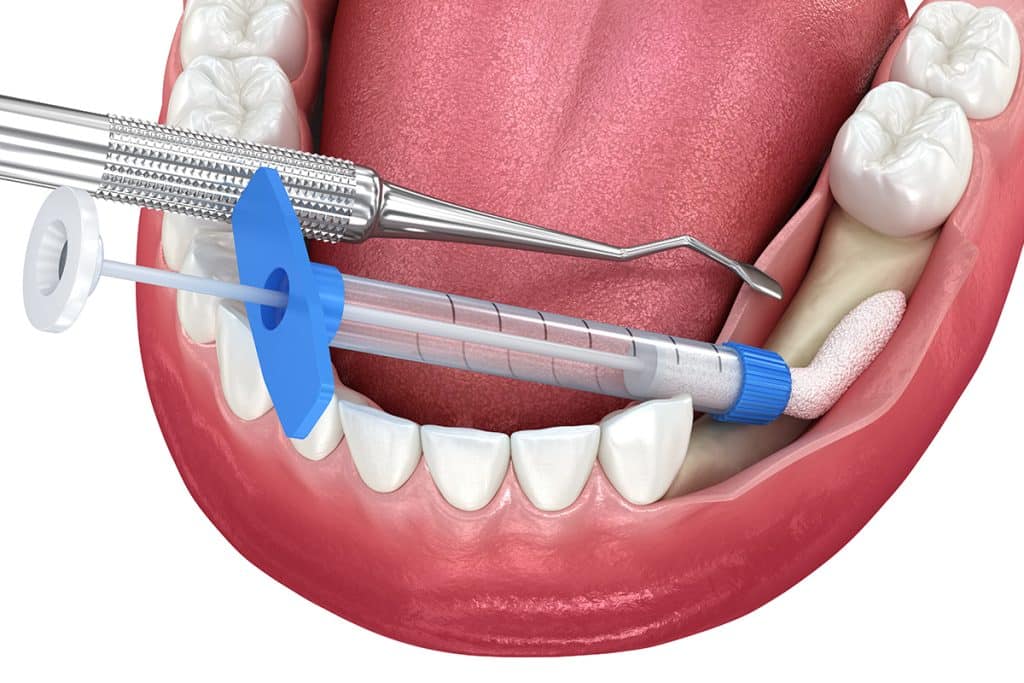What Are the Different Types of Dental Bone Grafts?

At Lucca Oral and Facial Surgery, we understand that preparing for a procedure like a dental implant requires a strong foundation. For many patients, achieving this involves a dental bone graft. This surgical procedure is essential for rebuilding and strengthening the jawbone, creating a stable base for future restorative work. When a tooth is lost, the underlying bone can begin to recede over time. A bone graft addresses this bone loss, ensuring the jaw has enough density and volume to support an implant successfully.
The process of bone grafting is a cornerstone of modern dental implantology. It allows us to restore both function and aesthetics for patients who might otherwise not be candidates for implants. By augmenting the jawbone, we create the necessary support structure, which is critical for the long-term success of the implant. Our team is dedicated to ensuring you are fully informed and comfortable throughout your treatment journey, starting with understanding the different approaches available for this important procedure.
Autografts: Using Your Own Bone
An autograft is often considered the gold standard in dental bone grafting. This type of graft involves harvesting bone from another part of your own body to transplant into your jaw. Common donor sites include the chin, the back of the jaw, the hip, or the tibia. Because the bone comes from your own body, it contains your own living cells, which significantly enhances the healing process and promotes new bone growth. This biocompatibility is the primary advantage of an autograft.
The procedure involves two surgical sites: one for collecting the bone and another for placing it in the jaw. While this may sound extensive, the amount of bone needed is typically small. Using your own bone minimizes the risk of rejection and disease transmission, as the material is a perfect match for your body. The living bone cells in the graft integrate seamlessly with the existing jawbone, creating a strong, durable foundation for a dental implant or other restorative treatments. We take great care to ensure both the donor and recipient sites heal properly with minimal discomfort.
Allografts: Donated Human Bone
Another common and effective option for dental bone grafting is the allograft. This method utilizes bone that has been donated from a human source, typically from a cadaver. The donated bone is sourced from accredited tissue banks, where it undergoes a rigorous screening and sterilization process to ensure it is safe for surgical use. All this processing removes any living cells, eliminating the risk of immune rejection or disease transmission. The result is a sterile, biocompatible scaffold that your body can use to build new bone.
The primary advantage of an allograft is that it eliminates the need for a second surgical site to harvest bone, which can mean a shorter procedure and a more comfortable recovery period for the patient. The processed bone acts as a framework, guiding your body’s natural bone-forming cells to migrate into the area and generate new, healthy bone tissue over time. This makes allografts a reliable and widely used alternative to autografts, providing excellent results in preparing the jaw for dental implants and other procedures requiring bone augmentation.
Xenografts: Animal-Sourced Bone
A xenograft is a type of bone graft that uses bone material sourced from an animal. The most common source for xenografts in dental procedures is bovine (cow) bone. Similar to allografts, this bone material is processed at a very high level to ensure it is completely sterile and biocompatible. All organic material is removed, leaving only the mineral content of the bone. This mineral structure acts as a natural scaffold that your body's own bone cells can grow on and around.
The key benefit of a xenograft is its ability to provide a durable and long-lasting framework that encourages your own bone to regenerate. The processed animal bone is very similar in composition to human bone, making it an excellent material for this purpose. Over several months, your body gradually replaces the graft material with your own new, healthy bone. Because xenografts are readily available from tissue banks, they provide a predictable and effective solution for augmenting the jawbone without the need for a second surgical site, simplifying the grafting process for many of our patients.
A Foundation for a Healthy Smile
Understanding the different types of dental bone grafts helps you make an informed decision about your oral health. Whether using your own bone (autograft), donated human bone (allograft), or animal-sourced bone (xenograft), the goal remains the same: to rebuild a strong and stable jawbone. Each option offers distinct advantages, and the best choice depends on your specific clinical needs, the extent of bone loss, and your overall health. Our team will perform a thorough evaluation to recommend the most suitable approach for you. These procedures are fundamental in preparing the jaw for dental implants, ensuring they have the solid support needed to function for years to come. Ultimately, a successful bone graft sets the stage for a restored smile that is both beautiful and functional.
Frequently Asked Questions About Bone Grafting
How long does it take to heal from a bone graft?
The healing process for a dental bone graft can vary from person to person, but it generally takes several months. Initially, you may experience some swelling and minor discomfort for a few days, which can be managed with medication. The critical part of healing happens below the surface as your body begins to integrate the graft material and generate new bone. This process, known as osseointegration, can take anywhere from three to nine months, or sometimes longer. During this time, the graft material fuses with your natural bone, creating a solid foundation. We will monitor your progress with follow-up appointments to ensure everything is healing correctly before proceeding with a dental implant.
Is the bone grafting procedure painful?
We prioritize your comfort during every procedure. A dental bone graft is performed under anesthesia, so you will not feel any pain during the surgery. We offer various office-based anesthesia services to ensure you are relaxed and comfortable. Following the procedure, it is normal to experience some soreness, swelling, and minor bruising in the treated area. However, this discomfort is typically manageable with prescribed pain medication and over-the-counter anti-inflammatory drugs. We will provide you with detailed post-operative instructions, including how to manage discomfort, to help you have a smooth and comfortable recovery.
At Lucca Oral and Facial Surgery, we are committed to providing exceptional care in a warm and professional environment. Our team has extensive experience in a wide range of oral surgery services, and we work together to ensure your treatment journey is as comfortable as possible. If you have more questions or would like to schedule a consultation, please contact us today.






